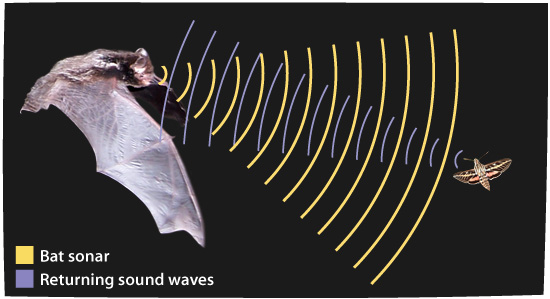Biology





- Sthethoscope
Term: stethoscopeOrigin: Anc Greek ??????/stethos(=brest)+ ??????/scopos(=aim, look at) CoinedThe stethoscope was invented in 1816 by French phycisian Rene Laennec at the Necker-Enfants malades Hospital in Paris. One day, when he...
- Ear: Amazing Numerical Facts
Here is an amazing collection of Number Facts about your ear! Do you want to get other Ear Facts? Click Here Numerical Facts about Parts of Ear Surface area of the tympanic membrane 85mm2 Length of the Eustachian tube ...
- Skin And Hair Facts
A lifespan of an eyelash is approximately 150 days.A Russian man who wore a beard during the time of Peter the Great had to pay a special tax.A survey done by Clairol 10 years ago came up with 46% of men stating that it was okay to color their hair. Now...
- Do You Have Be Ugly To Hear Well? ? Owls And Body Plan Symmetry
Biology concepts ? body plan, bilateral symmetry, cephalization, form follows function Paradox alert ? the most complex organisms in nature are the best at reducing complexity. How is that? Nature tends toward symmetry through evolution. Lower organisms...
- Why Does Your Telephone Have Two Holes? ? Perspective On Our Senses
We all know that we have five senses: seeing, hearing, tasting, touching, and smelling. Anyone disagree? Wanna put some money on it? @font-face { font-family: "Cambria"; }p.MsoNormal, li.MsoNormal, div.MsoNormal { margin: 0in 0in 0.0001pt; font-size:...
Biology
Amazing facts about ear
Amazing facts about ear

1. Ear is not only the organ of hearing. It helps for our body balancing. You may have noticed feeling dizzy if you have had an ear infection.
2. Ears convert sound waves into nerve impulses that are sent to the brain.
3. Earwax (cerumen) is not a waste. It is an important part of ear?s defense system. It protects our ear canal and inner ear by destroying the pathogens such as bacteria, fungus, dirt and even insects. It also cleans and lubricates the ear canal. So do not help the bacteria by removing the wax!
4. Earwax is made up of oil and sweat. It is produced by ceruminous glands which are the modified skin glands.
5. Ears secrete more earwax when you are afraid!! But its reasons are not yet clear.
6. Excessive ear wax can impair hearing, especially if it is pressed hard against the eardrum.
7. You get a new ear canal every year! The ear canal skin is constantly growing outward at a rate of 1.3 inches every year. If it didn?t fall off, you?d have a two foot string hanging out of your ear by the time you were 20!
8. Your ear drum is less than 0.7 inches (1.75 cm) in diameter. It moves less than a billionth of an inch when hearing.
9. The middle part of the ear (behind the ear drum) amplifies sound pressure.
10. The middle ear contains the Eustachian tube which helps equalize pressure and drain mucus.

11. Malleus (hammer), incus (anvil) and stapes (stirrup) are the 3 smaller bones present in the middle ear. Of these, stapes is the smallest bone in the body.
12. The smallest muscle in the body is the stapedius, located in the middle ear. It is only 1/20thof an inch long and controls the smallest bone in the body, the stapes bone. While the stirrup is twice the size of the muscle, it?s still only about 1/10thof an inch long.
13. The inner ear contains the spiral shaped hearing organ called the cochlea as well as the vestibule and semicircular canals which help with balance.
14. The inner ear is about the size of a pencil eraser, but it contains more than 20,000 hairs. If those hairs were the size of a pencil, you could create a stack of them 433 feet tall. About the same height as a 43 story skyscraper.
15. The inner ear is found inside the temporal bone, the hardest bone in the human body.
16. The parts inside of your ear that help you hear are small enough to be a spy microphone!
17. Your ear never stops working, even when you?re asleep. The ear continues to hear sounds, but your brain simply shuts them out. Maybe that?s why you sometimes suddenly wake up, positive you heard something, but with no idea what it was.
18. Your eyes are always the same size from birth but your nose and ears never stop growing. When babies look up at you with those big eyes, they?re the same size that they?ll be carrying around in their bodies for the rest of their lives. Their ears and nose, however, will grow throughout their lives and research has shown that growth peaks in seven year cycles.
19. Sound travels at the speed of 370 metre / second and 1250 km per hour.
20. Sounds waves are passed from air to liquid in the inner air. The inner air also contains tiny hair cells which react to sound waves, triggering chemicals that are sent to the brain as nerve impulses.
21. The human ear can distinguish between hundreds of thousands of different sounds.
22. Nobody knows how the brain tells the difference between high pitched and low pitched sounds, or between loud and soft sounds.
23. After eating too much, your hearing is less sharp. If you?re hearing to a concert or a musical after a big meal you may be doing yourself a disservice.
24. Sitting in front of the speakers at a rock concert can begin to damage hearing in only 7 ½ minutes. This damage is not reversible!
25. The smallest sound you can hear is 0 decibels. A jet engine clocks in at 120 decibels and a gunshot at 140. Eight hours of exposure to 90 decibels or more can cause damage to your hearing. When the sounds are above 130 decibels, it causes pain to the ears. Anything over 140 decibels causes immediate damage.
26. The sound of the roaring ocean you hear when putting a seashell next to your ear is not the ocean, but the sound of your blood surging through the veins in your ear.

27. A cat has 32 muscles in each ear and each ear can turn independently.
28. Bats can hear up to 110,000 Hz and use this ability like sonar to figure out how far away stuff is.
29. Cats and dogs can hear much higher frequencies such as ultrasound.
30. Cicadas have their ?ears? in their stomachs. How?s that for food for thought? (or hearing)
31. Crickets have their ?ears? in their knees.
32. Fish do not have ears, but they can hear pressure changes through ridges on their body.
33. Flies are deaf.
34. Male mosquitoes hear with thousands of tiny hairs growing on their antennae.
35. Snakes do not have ears, but their tongues are sensitive to sound vibrations. Snakes hear through the jaw bone and through a traditional inner ear. In essence, snakes have two distinct hearing mechanisms, which help them hear and catch prey.
36. The winner for ability to hear the highest frequencies is the porpoise, which can hear up to 150,000 Hz.
37. While people can hear in the range of 20 Hz to 20,000 Hz, cats hear from 45 Hz to 64,000 Hz. Mice can hear even higher, up to 91,000 Hz, but their lower limit is 1000 Hz.
38. Children have more sensitive ears than adults.
39. Ear infections are more common in children because of their developing immune systems and differences between their Eustachian tubes and those of adults.
40. Second-hand smoke in the home increases the risk of middle ear infections and allergies in children.
For more Ear facts Click Here
- Sthethoscope
Term: stethoscopeOrigin: Anc Greek ??????/stethos(=brest)+ ??????/scopos(=aim, look at) CoinedThe stethoscope was invented in 1816 by French phycisian Rene Laennec at the Necker-Enfants malades Hospital in Paris. One day, when he...
- Ear: Amazing Numerical Facts
Here is an amazing collection of Number Facts about your ear! Do you want to get other Ear Facts? Click Here Numerical Facts about Parts of Ear Surface area of the tympanic membrane 85mm2 Length of the Eustachian tube ...
- Skin And Hair Facts
A lifespan of an eyelash is approximately 150 days.A Russian man who wore a beard during the time of Peter the Great had to pay a special tax.A survey done by Clairol 10 years ago came up with 46% of men stating that it was okay to color their hair. Now...
- Do You Have Be Ugly To Hear Well? ? Owls And Body Plan Symmetry
Biology concepts ? body plan, bilateral symmetry, cephalization, form follows function Paradox alert ? the most complex organisms in nature are the best at reducing complexity. How is that? Nature tends toward symmetry through evolution. Lower organisms...
- Why Does Your Telephone Have Two Holes? ? Perspective On Our Senses
We all know that we have five senses: seeing, hearing, tasting, touching, and smelling. Anyone disagree? Wanna put some money on it? @font-face { font-family: "Cambria"; }p.MsoNormal, li.MsoNormal, div.MsoNormal { margin: 0in 0in 0.0001pt; font-size:...
